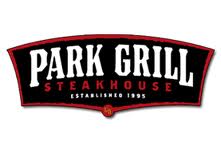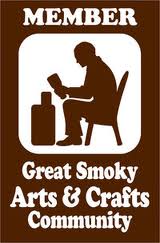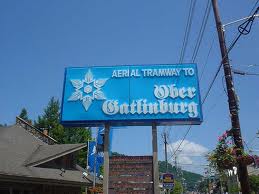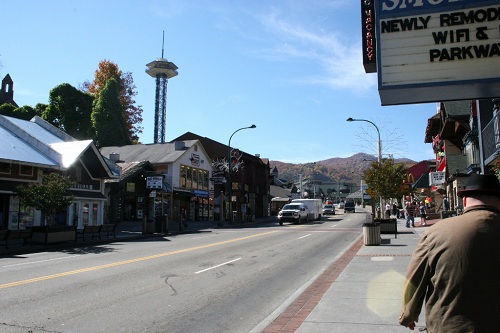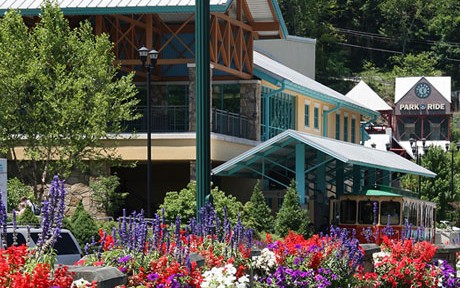Despite how they may appear, the Great Smoky Mountains weren’t built around Gatlinburg, Tn. Still, when you come through town, it might seem as if the mountains were strategically placed on the outskirts of downtown, surrounding it like a fortress.
The beginnings of Gatlinburg are two-fold – the actual first settlers of the area, and the first business that brought about the booming tourist town that many have come to know and love. The first settlers that are said to have laid claim in the area were Martha Jane Huskey Ogle and her family (five sons and two daughters, her brother, Peter Huskey, and his family) in 1807 when they settled what is now Gatlinburg to honor her recently deceased husband William.
In 1802, William Ogle had selected a piece of property to build a home for his family, telling them that he had found “The Land of Paradise” in the mountains of East Tennessee. While preparing to bring his family here, he fell ill, most suspect malaria, and died in 1803.
Over a century later in 1916, Andy Huff built the Mountain View Hotel in Gatlinburg, Tn to house timber customers. Upon completion of the hotel, Gatlinburg was unofficially incorporated. Huff later expanded the hotel to provide food and lodging for tourists coming in to vacation among the Smokies. From there, it’s all been written about as stores sprung up along the parkway like wildflowers and tourists came in droves.
When Huskey Ogle’s family settled the area, it was known as White Oak Flats. This is largely due to the numerous white oak trees native to the region. Her late-husband described it as a “Land of Paradise”. Soon after, families with familiar last names like McCarter, Reagan, Whaley, and Trentham began settling the area as well and many of their descendants make the Gatlinburg area their home today.
Gatlinburg itself derived its name from Radford C. Gatlin – owner of White Oak Flats’ second general store. Despite the name recognition, the flamboyant Gatlin was eventually banished from White Oak Flats in 1854 for his Democratic Party affiliation.
Over the next century very little changed in Gatlinburg, even with the onset of the Civil War. The first public school didn’t form until 1912 and it wasn’t until the formation of the Great Smoky Mountains National Park that the area started to feel some of those much-needed tourism dollars. A number of mountain-dwelling families began moving closer to town to take advantage of jobs in new hotels and restaurants brought about by the burgeoning tourism industry. Though World War II brought a bit of an economic slowdown, by war’s end the tourists had returned and Gatlinburg had to grow or get run over, literally.
Following the town’s incorporation in 1945, Pi Beta Phi, in conjunction with the University of Tennessee, established a program for emerging Tennessee artists during the summer. What came out of it was the Arrowmont School of Arts and Crafts. Arrowmont is now nationally regarded and offers year-round classes and workshops for college credit. Areas of study include: ceramics, fibers, metals/jewelry, painting, drawing, photography, warm glass, woodturning, woodworking, sculpture, and book and paper arts. The public is welcome year-round to visit the school’s five galleries, resource center and book and supply store.
Elijah Lawson Reagan established a woodworking business in Gatlinburg in the early 20th Century. It’s pertinent because it’s believed to be the oldest working business of its kind in the history of the Smokies. Up until the 1920s he worked with simple hand tools before harnessing the power of the Roaring Fork to operate with electric power. Of the instruments he used, a water-wheel was built and he installed a turbine and generator which powered his operation. He also furnished electricity to his neighbors until the Tennessee Valley Authority supplied the valley with electricity. The shop is still making fine furniture in the Reagan tradition today.
Religion also played a large part in early Gatlinburg, Tn beginnings and was important to its settlers. Most settlers attended services outdoors or in neighbors’ homes. Although this area was settled by Presbyterians, their first church was Baptist. The Sevierville Baptist Church reached all the way to White Oak Flats at the time convening in the early part of the 19th century at Baskins Creek. Many assume that this is the present day location of the Ogle cabin. A second church was built on River Road under the direction of Reverend Richard Evans, near the mouth of Mill (now Le Conte) Creek.
In 1837, a new church was formed and named White Oak Flats Baptist. The congregation met in a log cabin on Baskins Creek. The cabin also served as a school. The congregation later changed its name to the Gatlinburg Baptist Church in 1932 before constructing a stone church at the same location in 1951. As the town grew, Gatlinburg First Baptist decided to move in 1991 to its present location on Highway 321.
One other notable businessman was Noah Ogle. By most accounts Ogle was Gatlinburg’s first merchant when he established a business in 1850. The site is now home to the Riverside Hotel. Ogle later moved the store to the intersection of River Road and the Elkmont Highway in 1910 before his son took it over in 1916. Officially, the E. E. Ogle and Company store housed the Gatlinburg Post Office until 1925. Grandson, Charlie A. Ogle, and great grandson, Charles Earl Ogle, took over operations respectively, expanding the business through any means necessary downtown. It was said that if you needed anything, Ogles’ was the place to get it. Today, Gatlinburg’s Mountain Mall now stands where the general store once did, and still offering most anything tourists could want.
To get to Gatlinburg coming from Interstate 40 (Nashville, Knoxville, Asheville), take exit 407 toward Winfield Dunn Parkway for 8.5 miles. Continue to US 441 and follow it 13.2 miles to Gatlinburg.
Coming from the south (Cherokee, NC), head west on US-19, turn right onto US-441 N/Tsali Boulevard and continue to follow it 34.8 miles to Gatlinburg, Tn.
 Gatlinburg has a lot of traditions. If you are looking for the traditional live show in the Smokies, it is Sweet Fanny Adams Theatre. If you are looking for a great traditional attraction, it is Ripley’s Odditorium. And if you are looking for that special place to eat then you need to give the Park Grill a shot. A great menu, combined with tradition and a familiar mountainy look have made the Park Grill a tradition for thousands each year. They come to enjoy the food, be waited on by an amazing staff and soak in the feel of the mountains and of Gatlinburg itself.
Gatlinburg has a lot of traditions. If you are looking for the traditional live show in the Smokies, it is Sweet Fanny Adams Theatre. If you are looking for a great traditional attraction, it is Ripley’s Odditorium. And if you are looking for that special place to eat then you need to give the Park Grill a shot. A great menu, combined with tradition and a familiar mountainy look have made the Park Grill a tradition for thousands each year. They come to enjoy the food, be waited on by an amazing staff and soak in the feel of the mountains and of Gatlinburg itself.